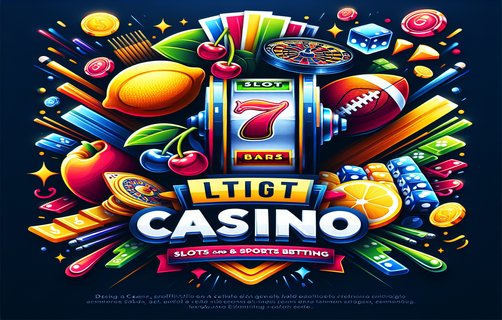Canasta: The Strategic Matrix of Luck and Skill
कनास्ता: भाग्य और कौशल का सामरिक मैट्रिक्स
Canasta, a card game of skill and chance, draws players into a realm where calculated strategies collide with the whims of fortune. At its core are intricate mechanisms like phase tracking, resource-time tracking, and the balance of player interactions, each layer contributing to the game's multifaceted appeal. The experience of playing Canasta can be likened to navigating a well-charted map that is often obscured by fog, requiring both keen insight and a bit of luck to reach the destination of victory.
Phase tracking stands as a cornerstone of strategic play in Canasta. Players must be adept at recognizing the phases of the game—melding, laying off cards, and going out—while simultaneously adapting their tactics based on their opponents' progress. This adds an engaging dynamic where forecasting future moves becomes critical. Players are tasked not only with managing their hands but also predicting their opponents' strategies, leading to a thrilling mental duel.
Resource-time tracking complements this strategic tapestry by managing the limited resources players have during their turns. The interplay between time and available cards creates an environment where decision-making requires foresight. Those who can effectively balance their immediate actions against long-term goals often find themselves ahead in score, emphasizing the interplay between thoughtful planning and reactive gameplay.
Another pivotal aspect is player interaction balancing. Canasta shines in its ability to prompt collaboration and rivalry among players. With rules that allow players to manipulate their interactions—be it through forming partnerships or competing directly—the game becomes a reflection of social dynamics. Engaging in Canasta is akin to participating in a dance, where each player’s movements influence and respond to the others’ decisions, thus fostering a rich tapestry of strategic relationships.

Gametrays, the platforms upon which cards are played, also hold significance. A well-organized tray not only enhances individual player strategy but promotes clarity in the game's progress. The visual aspect assists players in their decision-making processes, enabling them to assess risks quickly and manage their hand effectively.
Luck-dependent rewards play a dual role in Canasta, captivating players who cherish unpredictability while retaining the essence of strategic depth. Random card draws can either bolster a player’s chances of winning or sabotage meticulously laid plans, intertwining luck with skill. Thus, the tension between fate and strategy is palpable, evoking emotions that resonate throughout the game.
Additionally, scoreboard layout impacts player motivation and serves as a tangible representation of their position in the game. A clear, engaging layout fosters a competitive spirit, encouraging players to strive not just for nominal victory but also for status. Through visual indicators of progress, players are reminded of their goals, which can elevate gameplay intensity.

In conclusion, the in-depth analysis of Canasta underscores the delicate balance of strategic thinking, player interaction, and the unpredictable nature of luck. As players immerse themselves in the intricate dance of tactics and fate, Canasta remains a timeless testament to the enriching experiences that card games can provide. Every session is a blend of art and science, making it a beloved pastime for enthusiasts and a captivating challenge for newcomers alike.
कनास्ता, कौशल और भाग्य का एक कार्ड खेल, खिलाड़ियों को एक ऐसे क्षेत्र में खींचता है, जहाँ संगठित रणनीतियाँ भाग्य की मनमानी के साथ टकराती हैं। इसके मूल में चरण ट्रैकिंग, संसाधन-समय ट्रैकिंग और खिलाड़ी इंटरएक्शन संतुलन जैसे जटिल तंत्र हैं, प्रत्येक परत खेल की बहुआयामी अपील में योगदान करती है। कनास्ता खेलने का अनुभव एक अच्छी तरह से चार्ट किए गए मानचित्र का मार्गदर्शन करने के समान है, जो अक्सर कुहासा से ढका होता है, इस आवश्यकता के साथ कि विजय के गंतव्य तक पहुँचने के लिए प्रतिभा और भाग्य का एक टुकड़ा हो।
चरण ट्रैकिंग कनास्ता में रणनीतिक खेल का एक मुख्य आधार है। खिलाड़ियों को खेल के चरणों को पहचानने में सक्षम होना चाहिए- मेल्डिंग, कार्ड पर डालना और बाहर जाना- जबकि साथ ही अपने विरोधियों की प्रगति के आधार पर अपनी रणनीतियों को अनुकूलित करना चाहिए। यह एक रोमांचक गतिशीलता को जोड़ता है, जहाँ भविष्य की चालों की भविष्यवाणी करना महत्वपूर्ण हो जाता है। खिलाड़ियों को न केवल अपने हाथों को प्रबंधित करना होता है, बल्कि अपने विरोधियों की रणनीतियों की भविष्यवाणी भी करनी होती है, जिससे एक रोमांचक मानसिक द्वंद्व उत्पन्न होता है।
संसाधन-समय ट्रैकिंग इस रणनीतिक कैनवास को पूरा करती है, जो खिलाड़ियों के पास अपने चालों के दौरान सीमित संसाधनों का प्रबंधन करने की आवश्यकता को जोड़ती है। समय और उपलब्ध कार्ड के बीच का आपसी प्रभाव एक ऐसा परिवेश बनाता है जहाँ निर्णय लेने में दूरदर्शिता की आवश्यकता होती है। जो खिलाड़ी अपने तात्कालिक कार्यों संतुलित कर सकते हैं, वे सामान्यतः स्कोर में आगे रहते हैं, जिससे विचारशील योजना और प्रतिक्रियाशील खेल के बीच संपर्क की भूमिका को बढ़ाया जा रहा है।
एक और महत्वपूर्ण पहलू खिलाड़ी इंटरएक्शन संतुलन है। कनास्ता अपने खिलाड़ियों के बीच सहयोग और प्रतिकूलता को प्रेरित करने में चमकता है। इसके नियम खिलाड़ियों को उनके इंटरएक्शन को नियंत्रित करने की अनुमति देते हैं- चाहे वह साझेदारी बनाने के माध्यम से हो या सीधे प्रतिस्पर्धा के माध्यम से- खेल सामाजिक गतिशीलता का एक प्रतिबिंब बन जाता है। कनास्ता में भाग लेना एक नृत्य में भाग लेने के समान है, जहाँ प्रत्येक खिलाड़ी की चालें अन्य के निर्णयों को प्रभावित करती हैं, जिससे रणनीतिक संबंधों का एक समृद्ध ताना-बाना उत्पन्न होता है।
गेमट्रे, जिस पर कार्ड खेले जाते हैं, का भी महत्व है। एक सुव्यवस्थित ट्रे न केवल व्यक्तिगत खिलाड़ी की रणनीति को बढ़ाती है, बल्कि खेल की प्रगति में स्पष्टता को भी बढ़ावा देती है। दृश्य पहलू खिलाड़ियों को उनके निर्णय लेने की प्रक्रियाओं में सहायता करता है, जिससे वे जल्दी से जोखिमों का मूल्यांकन कर सकते हैं और अपने हाथ को प्रभावी ढंग से प्रबंधित कर सकते हैं।
भाग्य-निर्भर पुरस्कार कनास्ता में द्विविधा का खेल करते हैं, खिलाड़ियों को जो अप्रत्याशितता को पसंद करते हैं, को आकर्षित करते हुए, जबकि रणनीतिक गहराई का सार बनाए रखते हैं। यादृच्छिक कार्ड ड्रॉ एक खिलाड़ी के जीतने की संभावनाओं को बढ़ा सकते हैं या सावधानीपूर्वक रखी गई योजनाओं को विफल कर सकते हैं, जिससे भाग्य और कौशल intertwined होते हैं। इस प्रकार, भाग्य और रणनीति के बीच तनाव स्पष्ट है, जो खेल के पूरे अनुभव में गूंजता है।
अतिरिक्त रूप से, स्कोरबोर्ड लेआउट खिलाड़ी की प्रेरणा को प्रभावित करता है और खेल में उनके स्थान का ठोस प्रतिनिधित्व करता है। एक स्पष्ट, आकर्षक लेआउट प्रतिस्पर्धात्मक भावना को बढ़ावा देता है, जिससे खिलाड़ियों को केवल सांकेतिक विजय पाने के लिए प्रेरित किया जाता है, बल्कि स्थिति के लिए भी। प्रगति के दृश्य संकेतों के माध्यम से, खिलाड़ियों को उनके लक्ष्यों की याद दिलाई जाती है, जो खेल के प्रदर्शन को बढ़ा सकती है।
अंत में, कनास्ता का गहन विश्लेषण रणनीतिक सोच, खिलाड़ी इंटरएक्शन और भाग्य की अस्थिर प्रकृति के बीच नाजुक संतुलन को रेखांकित करता है। जब खिलाड़ी रणनीतियों और भाग्य के जटिल नृत्य में डूबते हैं, कनास्ता समय की परिभाषा बन जाते हैं कि कार्ड खेलों के अनुभवों को समृद्ध बनाने के लिए क्या किया जा सकता है। प्रत्येक सत्र एक कला और विज्ञान का मिश्रण होता है, जिससे यह उत्साही लोगों के लिए एक प्रिय शगल और नए लोगों के लिए एक आकर्षक चुनौती बन जाती है।

comments
CardMaster99
Great insights into the strategic depth of Canasta! Love how you explained phase tracking.
LuckBeALady
Fantastic analysis! The balance between luck and skill really makes Canasta thrilling.
Strategist420
I never thought about player interaction this way. Makes me want to play with a new perspective.
MeldMaster
Scoreboard layout is so important! I appreciate how you highlighted its role in maintaining competitive spirit.
TheCardCounter
This really deepens my understanding of resource-time tracking. Thank you for this detailed breakdown!
GamerGirl88
I love how you compared Canasta to a dance. It truly captures the essence of the game.